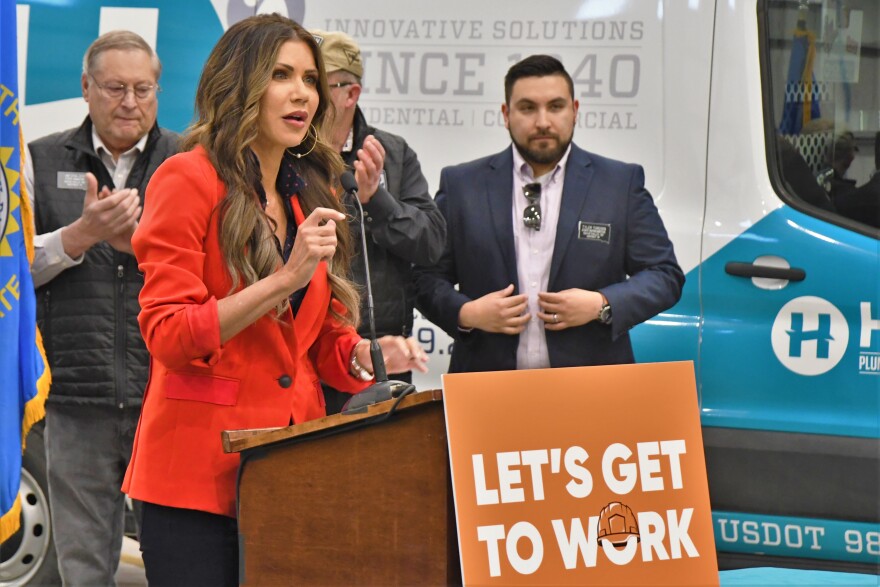Gov. Kristi Noem is responding to criticisms about the slow rollout of a $200 million dollar housing infrastructure program.
Noem said the houses would already be built if lawmakers passed her original bill two sessions ago.
The original bill placed the money with the Governor’s Office of Economic Development, which is run by Steve Westra. Westra is the vice president of Sioux Falls Developer Hegg Companies.
Lawmakers, instead, placed the $200 million within South Dakota Housing. Noem said that move has gummed up the process.
“Those legislators wrote the bill that said it was going to Housing, which now we’re tied up in the bureaucracy of Housing,” Noem said. “Remember, this was the first time they gave an unprecedented amount of state dollars to a housing authority that’s governed by the federal government, not the state.”
For bonding purposes, the Housing Development Authority is a quasi-independent group established by the state legislature in 1973. It administers mostly federal programs, with some state programs as well.
Noem appointed the new interim director, Chas Olson, following the abrupt departure of Lorraine Polak, who’d served in the authority for 25 years. Noem is declining to comment on the resignation. Instead, she thanked Polak for her service to the state of South Dakota.
State lawmakers and the governor’s office worked lock step to pass language establishing the housing infrastructure program this past session. It was the first bill the governor signed.
However, state lawmakers heard last week rules for that program must be approved by the Governor’s Office of Economic Development—the agency lawmakers moved the $200 million from to South Dakota Housing.
Noem said if she had her way in 2022, houses would be built and families living in them.
“Because it would be out a year and a half ago," Noem said. "I wanted grants to go to communities so they could get right to work and build houses. Because they, instead, turned it over to the Housing Authority, now it’s run like every housing federal program and it’s just taking a long time to get it done.”
The money likely won’t reach developers until September. However, the interim director says developers may be able to retroactively apply for dollars if they start an infrastructure project this year.






